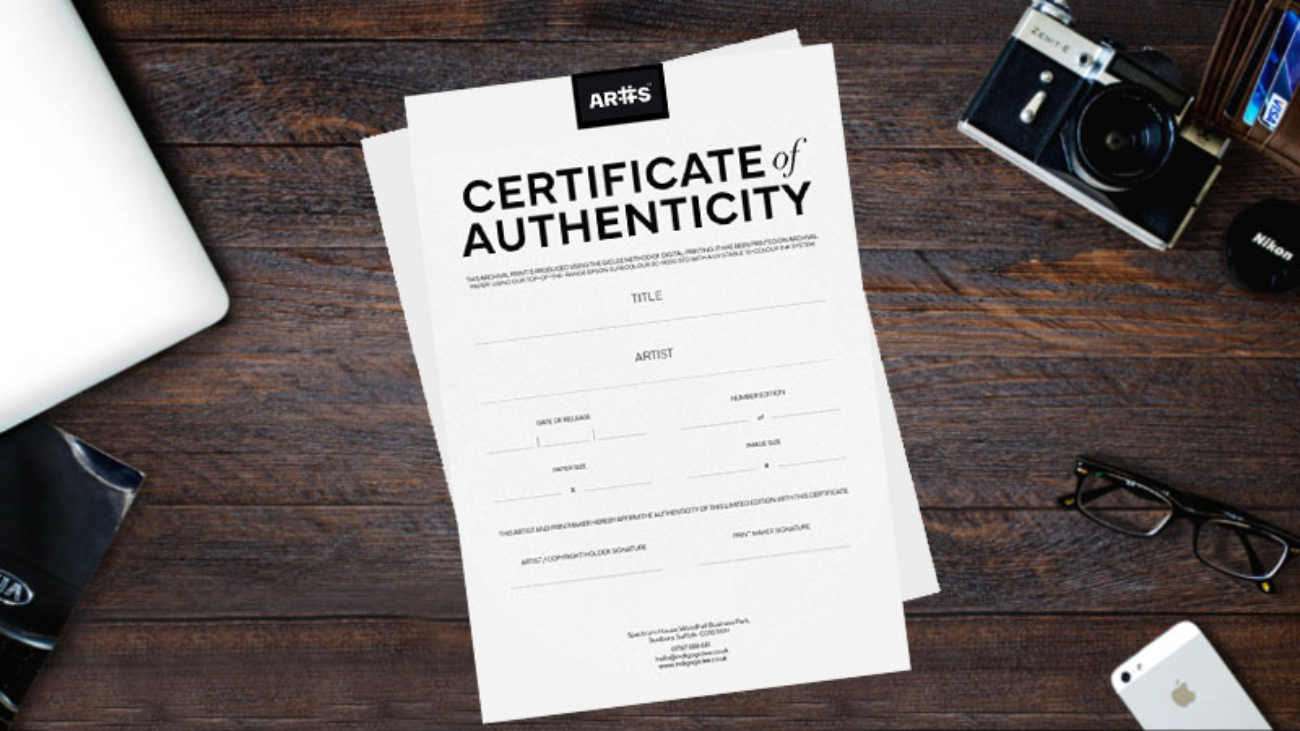The art market has profoundly evolved over the last ten years. The rise of online sales, the globalization of buyers, and the proliferation of digital galleries and platforms have disrupted the rules of the game. In this dematerialized environment, art certification has become a fundamental tool to protect artists, reassure buyers, and guarantee traceability.
Opportunities and pitfalls of digital technology
Buying a piece of art from a smartphone has become commonplace. But this ease of access has a downside: the proliferation of frauds, copies, and counterfeits. The massive dissemination of artwork visuals on social media has allowed counterfeiters to easily reproduce works “in the manner of,” to the detriment of the artist and buyers misled in the operation. False representatives are also increasingly appearing, selling counterfeit works with false certificates (without verifying the identity of the people concerned).
Market globalization also favors illicit trafficking (e.g., works looted in conflict zones). Some of this trafficking even funds criminal or terrorist networks. In this context, the reliability of authenticity is more crucial than ever.
What is a reliable certificate of authenticity?
A certificate of authenticity attests that a work is an original creation, signed, dated, and documented. It must include precise information:
- Artist’s name
- Title of the work
- Date of creation
- Technique and materials
- Dimensions
- Main image of the work, and ideally other complementary photos (such as a photo of the artist with the work, a detail, etc.).
- Signature or stamp of the certifier
But it is also essential that this certificate follows a recognized standard and is unforgeable. Receiving a simple PDF or a sheet of paper is not enough; one must demand higher quality and legal guarantees.
An essential reference: Object ID
Developed by the International Council of Museums (ICOM), the Object ID standard constitutes the international reference protocol for the identification of art objects and antiquities. It proposes a structured and standardized format to describe a work exhaustively: type of object, materials, techniques, inscriptions, ownership history, etc.
This standard is used by museums, law enforcement agencies, customs, and art market players to combat theft, fraud, and trafficking. At Artts, this standard is at the heart of our certification system, guaranteeing solid, clear documentation that complies with the best international practices.
New technologies at the service of traceability
To address new challenges, several innovations are redefining art certification:
- Digital certificates: stored online, structured, accessible, verifiable.
- Blockchain: allows an unforgeable record of the work’s history, under the control of a trusted third party.
- Synthetic DNA: a unique and invisible biomolecular tagging technology, directly applied to the artwork, physically linking it to its certificate.
These tools do not replace human expertise, but they reinforce documentary integrity, legal security, and long-term traceability.
Artists, buyers, professionals: a shared requirement
For an artist, certifying their work is a strong professional act. It:
- protects against copies,
- enhances the value of the work,
- instills confidence in collectors.
For a buyer, it is an indispensable guarantee, especially in case of resale, insurance, or inheritance. A well-designed certificate can increase the value of a work and facilitate its circulation. Conversely, a work without solid certification risks being excluded from sales or undervalued.
The Artts Solution: modern, accessible, and rigorous certification
Artts offers a simple and secure platform, aligned with international standards such as Object ID, to allow everyone – artist, gallerist, expert, collector – to create and manage robust digital certificates.
Our solution allows:
- structuring essential data,
- adding attachments and histories,
- inviting experts to co-validate certain information,
- concretely protecting intellectual property.
Above all, it is designed to make this requirement simple and accessible.
Conclusion: certification, a pillar of trust and value
In a globalized, digital, and sometimes opaque market, certification has become a strategic tool. It no longer concerns only institutions, but every artist, every work, every transaction. With Artts, certifying becomes a simple, modern, and powerful act, serving transparency, value, and the longevity of art.
François Toussaint,
12 octobre 2024
June 15, 2024
